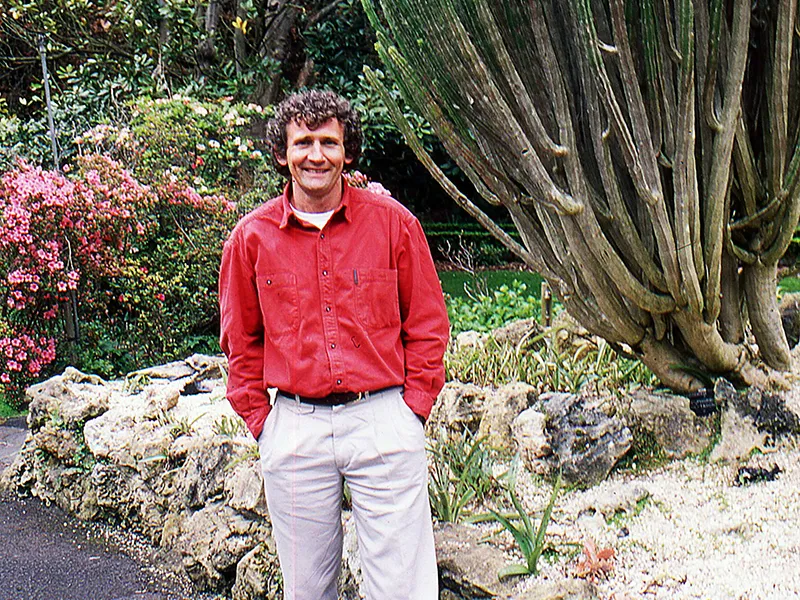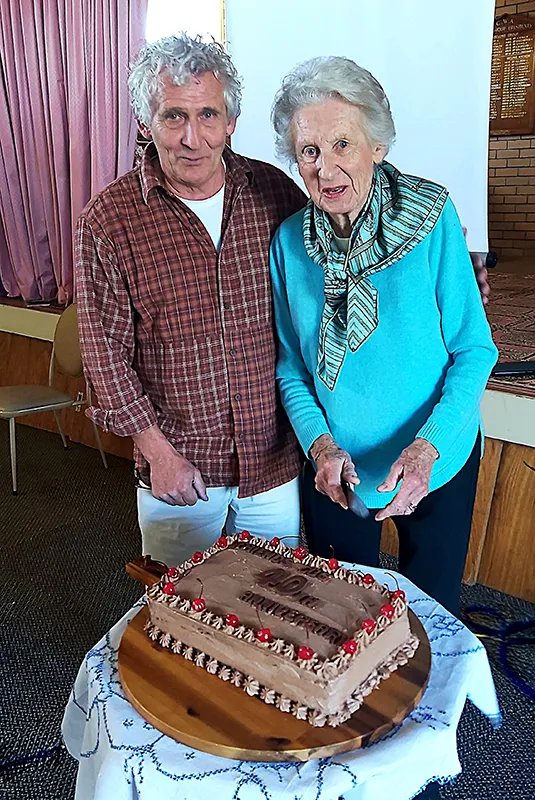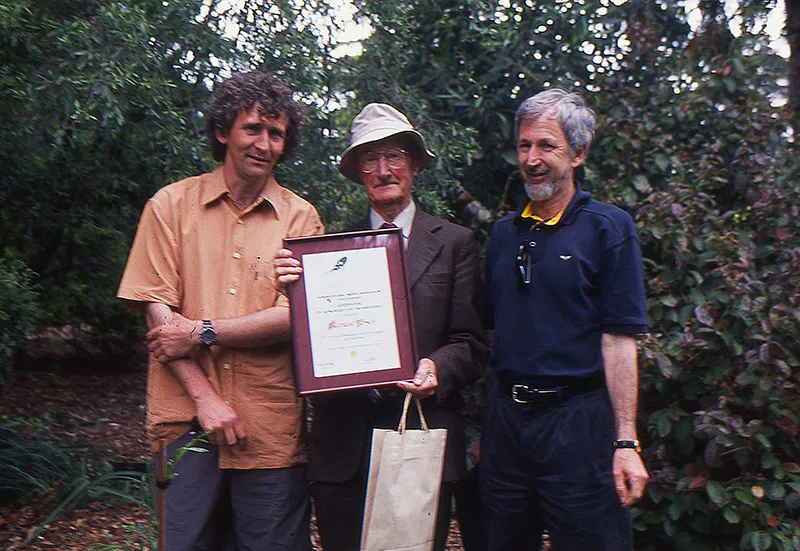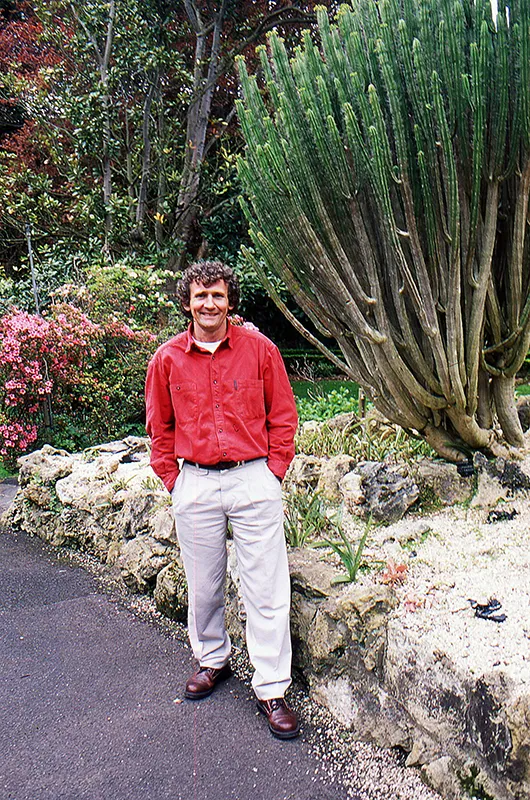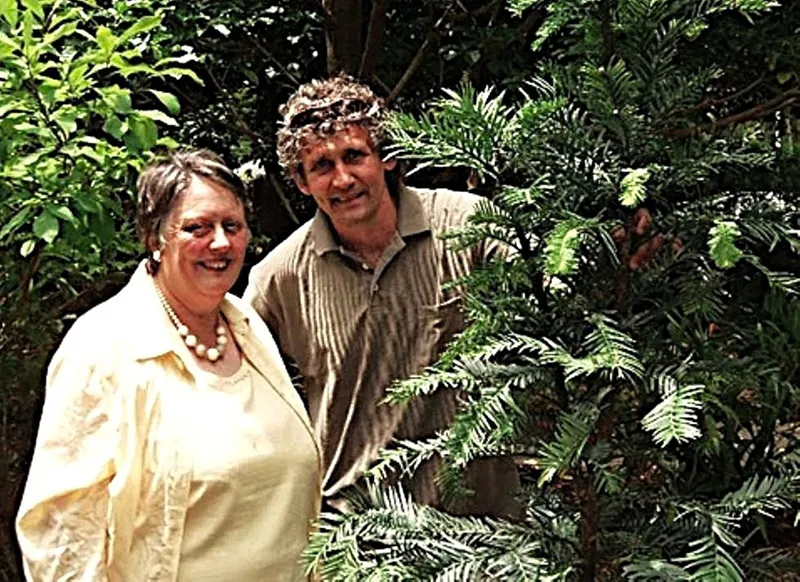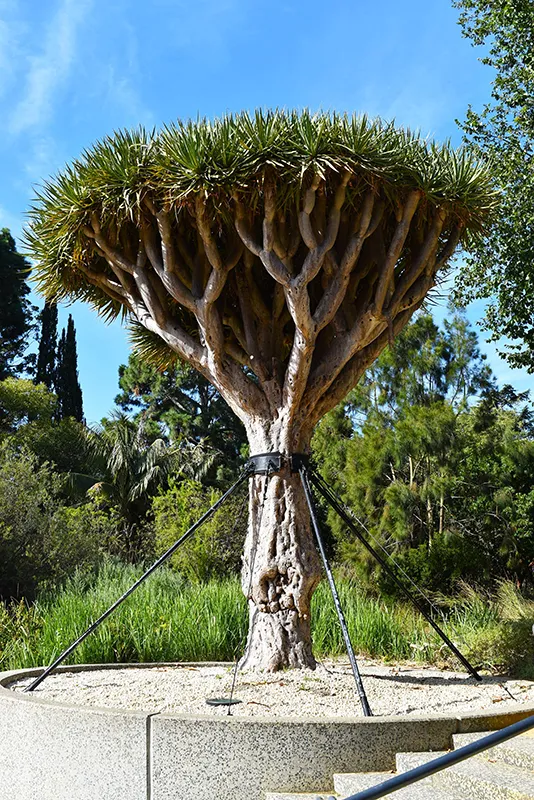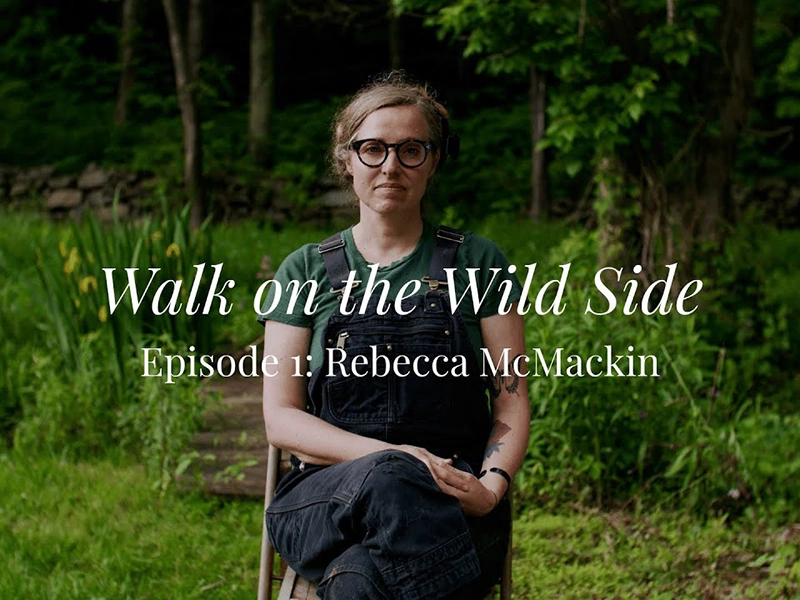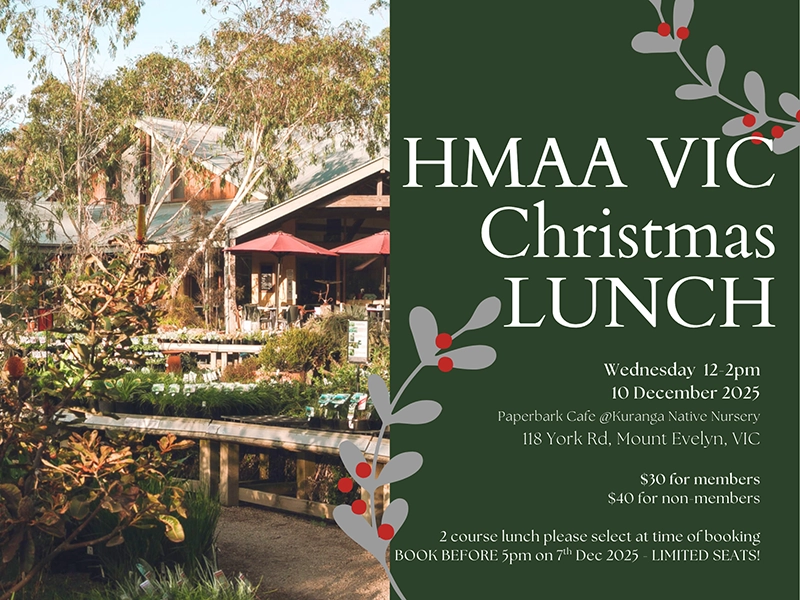Spanning more than 40 years, John Arnott’s varied and rewarding career has taken him from zoological beginnings to horticultural highlights and achievements. Gail Thomas looks back on John’s career as he enters what he calls “semi-retirement”.
John began his career at Melbourne Zoo before becoming Director at the Geelong Botanic Gardens. During his time at Geelong he quipped, “I’ve had many roles over the years, but I’ve only ever had two jobs, having previously worked at the Melbourne Zoo for 18 years!”
From 1980-1990 John held various horticultural roles at Melbourne Zoo including involvement with the Butterfly Project, which he describes “was a landmark for the development of programs that integrated the elements of flora, fauna, research, and visitor experience”.
“Being Senior Horticultural Technical Officer and then from 1997-2000 Curator of Horticulture at the Zoo was a challenging and innovative role that significantly advanced the development of zoological horticulture as a specialist horticultural field,” said John.
“With the advent in the 1980s of naturalistic exhibits and zoological horticulture as a specialist horticultural field, Melbourne Zoo was transformed and today is broadly recognised as one of the world’s great zoos.”
John was also responsible for providing horticultural and curatorial direction for the Zoo grounds and gardens including the landscape horticultural components of naturalistic exhibits and their surrounds, the implementation and development of Threatened Orchid Recovery program for Diuris fragrantissima and other terrestrial orchid species, and planning and implementation of plant inventory for the documentation of the living collection at Melbourne Zoo.
In 2000 John became Director of Geelong Botanic Gardens, the fourth oldest botanic gardens in Australia. In this time, he embraced the challenge of the gardens doubling in size with the completion of the 21st Century Garden project in 2004, and the establishment and growth of the Eastern Park Horticultural Complex.
During 2025 National Volunteers Week, John was guest speaker for the Friends of the Geelong Botanic Gardens, captivating attendees with an engaging presentation, reflecting on his strong partnership with the Friends and joining their 40th anniversary celebrations by cutting the celebratory cake with founding member of the Friends Jayne Salmon.
John recalled, “In 2000 one community group based their activities at the GBG, by 2006 12 community groups were basing their activities at the Gardens”.
“The 21st Century Garden was intentionally designed to be very contemporary, and the landscape, materials, planting themes and general orientation is a real contrast to the old heritage Garden, giving a combination of new and old.
“There’s an interesting narrative that goes through from the entrance to the end of the Garden. In one respect we’ve got very, very local plants and then we’ve got the absolute expression of the exotic with a collection of cacti and succulents. There’s nothing like it in Australia and arguably, it’s unique world-wide with the combination of a very contemporary garden in concert with a heritage garden – it’s a serendipitous design!
“You can walk right or left, but before you do, look straight ahead to see the dramatic sand bowl setting off the dragon tree (supported by stakes) with the towering bunya pine and striking cacti on the right. The dragon tree (Dracaena draco) was planted by the first curator Daniel Bunce in the 1850s and moved from outside the Garden gates to the current site.”
Looking back
In 2001 John led Horticultural Media Australia Association members on a tour of the Geelong Botanic Gardens with a picnic lunch to celebrate the induction of the late George Jones with Life Membership of HMAA. There was also the memorable occasion in 2005 when the Gardens planted a Wollemi pine (Wollemia nobilis), donated by HMAA member Gail Thomas.
John commented, “It was like putting the last piece in the jigsaw – completing the ‘family tree’. The Wollemi pine, along with other araucarias including bunyas and agathis are part of the Araucariaceae family and in recent years the GBG had established a most significant collection of these trees. Araucariaceae has had an association with the GBG since day one with the first curator Daniel Bunce, and when you look at and the catalogue of plants in cultivation in 1862, Araucaria bidwillii and Agathis australis were there.”
After six years at Geelong, John took up a new position as Park Visitor Services Manager, with the City of Melbourne. Following this he took on the position of Coordinator, Wilson Botanic Park, Berwick from 2007-2008 before becoming Manager Horticulture, Royal Botanic Gardens Cranbourne Gardens (RBGC), recognised locally, nationally and internationally for its innovative approaches to plant display, the emergence of conservation horticulture and community engagement.
The first stage of the Australian Garden at the Royal Botanic Gardens Cranbourne (RBGC) was opened to the public in May 2006 with the key element of the brief for the design to ‘capture the beauty and diversity of Australian plants and landscapes’, a clear and exquisitely simple, yet incredibly ambitious proposition.
In spring 2009 the Australian Native Plants Society (Australia) held its 25th biennial conference and seminar in Geelong. The conference theme was ‘Australian Plants in the 21st Century’. John presented the keynote address titled ‘Capturing the beauty and diversity of Australian plants and landscapes’.
John’s 2009 paper covered the history of the Cranbourne site, the process and planning behind such a garden, the design philosophy and intent, key features and elements and perhaps most importantly the plants of the Australian Garden.
BGANZ committees and other roles
John says his semi-retirement in 2024 has allowed him to balance family, community, recreation activities, and contribute meaningfully to botanic gardens – “a sector I love and remain committed to”.
“I am a founding member of Botanic Gardens of Australia and New Zealand (BGANZ). Since its inception I have actively supported the progression of the organisation through the facilitation of numerous roles including serving on the inaugural BGANZ Congress Program Committee (2003-2004). The inaugural BGANZ Congress was held at the Geelong Botanic Gardens and attracted more thar 200 delegates.
“My role as Lead of the Program Committee was both challenging and most rewarding. It ‘supercharged’ my interest and capacity to play a central role in the network and gave me a ‘seat at the table’ with the founding Council and its membership.”
From 2005 to the present John has served on the Committee of BGANZ Victoria, which he says is arguably the most active and progressive of the BGANZ Regional Groups.
“Since 2005 I have supported BGANZ Victoria activities through active participation on BGANZ Victoria Executive and have held numerous roles including extended periods of Conveyor. In addition, I have continued to be an active participant in the BGANZ Congress Program Committees including representing the RBGV and BGANZ on the 7th Global Botanic Gardens Congress Program Committee (2022).
“I have played key program development roles in Botanic Gardens Day working groups and the delivery of successful BGANZ webinar series hosted by Costa Georgiadis.
“I am most proud of seeking funding, initiating, coordinating, and delivering numerous sector capacity building programs such as Care for the Rare, Plant Records Management, Revision of Living Collections Toolkit and publishing of the Climate Change Alliance of Botanic Gardens – Landscape Succession Plan.”
John was a founding member and on the Advisory Committee of the Australian Network for Plant Conservation from 2003-2006, joining the Advisory Committee whilst at the Geelong Botanic Gardens and was a Board member of the Diggers Club and Foundation from 2018-2022. He was also a founding member of Sustainable Gardening Australia – Board of Directors member from 2003-2007 and the Dandenong Ranges Gardens Advisory Committee from 2007-2015.
“The Australian Flora Foundation – Management Council 2020-2025 aims to support research that will create improved understanding and greater awareness of the value of the Australian flora, leading to pathways for their conservation and utilisation. The Foundation’s grants program supports projects for up to three years, with budgets in the range of $20,000 to $60,000. As Councillor I was responsible for assessing applications, shortlisting, and allocating grants.”
Considering John’s current activities, it is hard to contemplate this as ‘semi-retirement’.
His Current Botanic Gardens Related Projects/Activities include being and active Committee Member of the Botanic Gardens Collections and Records Management Group (BCARM); Assessing feasibility of a Botanic Gardens Sector Wide Mentor Program (with CEO BGANZ); currently as a BGANZ Victora Committee Member and Co-author of Growing Victoria’s Botanic Gardens Grants Program – Collective Impacts Report.
John co-hosts 3CR Gardening Show (Listed #4 Australian Gardening Radio Broadcast/Podcasts), is a Committee Member 2025 BGANZ Congress Steering Group ACT. November 2025, a Committee Member of Botanic Gardens Week Working Group and a Committee Member Friends of the Royal Botanic Gardens Cranbourne.
John is also Horticultural Consultant, Andrea Proctor Landscapes (Casual); a Member of Horticultural Skills Professional Development Working Group (Informal) and has a Pivotal role in the development and roll out of the BGANZ Living Collections Toolkit.
John Arnott is highly respected and recognised for his dedication and lifetime involvement in the horticultural industry with accolades including being awarded the Australian Native Plants Society (National) Australian Plants Award for contributions in advancing the appreciation and understanding of Australian native plants and being made an Honorary Life Member of both Zoos Victoria and the Friends of the Geelong Botanic Gardens.
—————
By Gail Thomas

